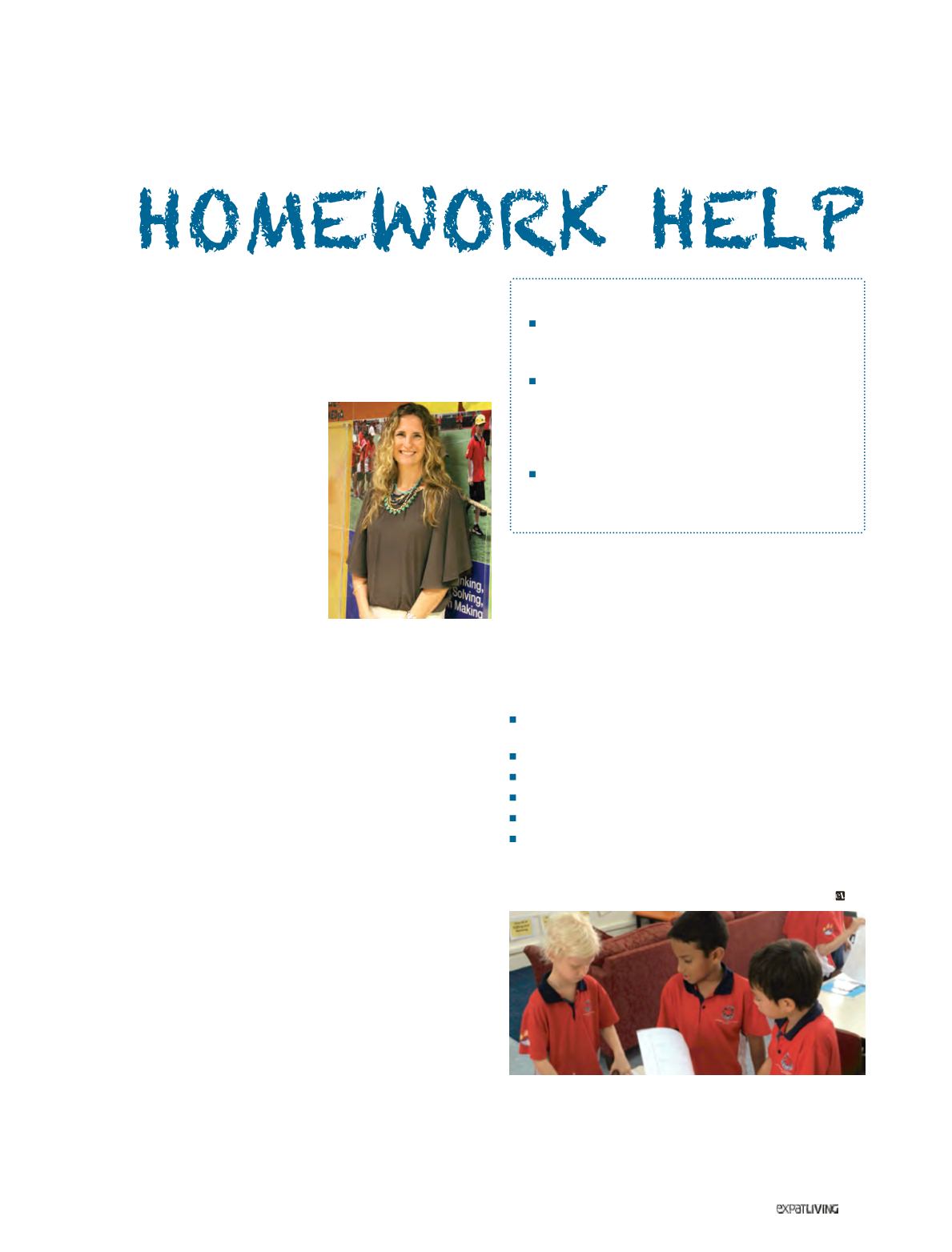

EDUCATION
127
April15
There is international
debate on the value of
homework, particularly
in primary school. What
is the CIS approach?
Homework needs to reflect a
student’s stage of cognitive
development and should
strengthen the home-school
connection. We believe our
youngest students need daily
home opportunities to talk
about learning and play. It
is beneficial for parents to
connect the classroom with personal inquiries that their child
may be exploring at the time.
We emphasise daily reading at home, because time spent
reading is the most significant predictor of academic success.
Reading routines can include parents reading aloud, shared
reading or independent reading.
The aim of homework for Grade 1 to 6 students is to
reinforce and extend new concepts, and consolidate essential
mathematics and literacy skills. Homework is posted weekly to
provide flexibility and promote a balanced after-school life. We
also want students to be excited about extending their learning
and ignite an intrinsic sense of ownership and engagement!
How much homework do CIS students do?
The time taken will depend on the learning tasks, the student’s
grade level, their home context and their ability and diligence.
A general guide, inclusive of reading, is 10 minutes for Grade
1, 20 minutes for Grade 2, and so on up to 60 minutes for
Grade 6.
When is the best time of day to engage kids in
homework?
Parents know their children best. Some may find that their
young child is simply too tired at the end of the day, and
reading is enough. As a general rule, students need a break
after the school day. Provide the child with a chance to have
a snack, discuss their day and unwind from school. Find a
routine that works well, and stick to it. If evenings are used for
home learning, do make sure a child maintains an appropriate
bedtime.
Homework trivia – did you know?
Singapore ranks third in time spent by children on
homework. The global weekly average is five hours,
but 15-year-olds here spend 9.4 hours (OECD).
Homework as a concept has inspired more than
a few contemporary musicians. Fleetwood Mac’s
song “Homework” was a hit in 1968, French band
Daft Punk released an album called
Homework
, and
there is a Dutch house band named Homework.
The famous excuse made by children who didn’t
complete a homework assignment, “The dog ate it”,
is thought to have originated in 1905 in Wales.
What are some strategies for calm homework time?
Home learning should be viewed as an opportunity to engage
in learning together, not a task to be endured! So it’s important
to set up the parent-and-child homework relationship. For
example, establish the reasons you as a parent are involved:
to support your child, offer guidance with difficult or new
learning, understand what your child is learning at school, or
offer your insights.
Consider these strategies:
Set up a routine so your child is aware of the time that will
be devoted to homework;
Create an environment where distraction is limited;
Ensure necessary materials are on hand;
Be aware of the expectations of the teacher;
Ask your child how you can help;
Try to engage in discussions about the learning, rather than
arguments about what is to be done.
Importantly, practise patience. What may take one child five
minutes to complete can take another child 30 minutes.
Lakeside Campus
7 Jurong West Street 41
6467 1732
cis.edu.sg
Whether it’s reading or algebra revision, there’s
no escaping homework for children – and parents
too. We asked
Canadian International School
(CIS) Primary Years Programme Coordinator
ANNA-MARIE MCALEER for her tips.
Tanjong Katong Campus
371 Tanjong Katong Road
6345 1573



















